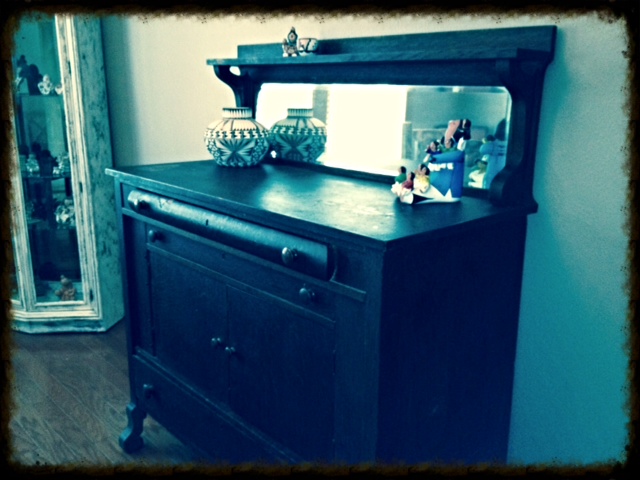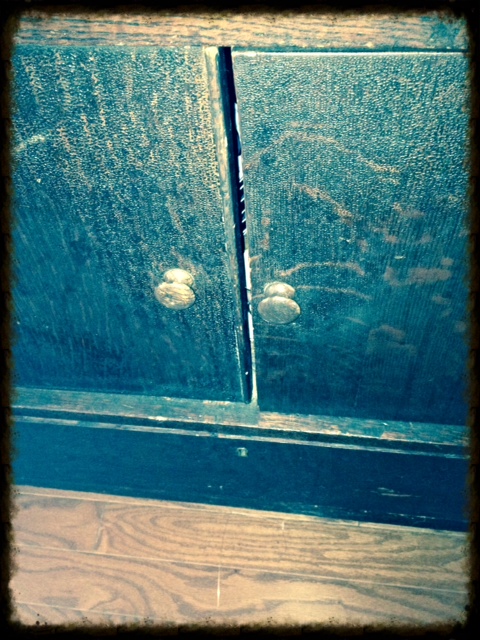“We always hope for the easy fix: the one simple change that will erase a problem in a stroke. But few things in life work this way. Instead, success requires making a hundred small steps go right – one after the other, no slipups, no goofs, everyone pitching in.” -Atul Gawande, Better: A Surgeon’s Notes on Performance

The antique in the picture above reminded me, once again, of the importance of teacher-guided, small-group instruction in math. I know, it’s probably tangential thinking like a 1st grader, but let me explain.
This buffet has been in my husband’s family for over a hundred years. It is made of solid wood in a mission style. It was built in the late 1880’s and has the most interesting and distinctive marks on it. One of the marks was made from an old-fashioned flat iron that was accidentally left on the surface. The triangular mark is a commentary on history, especially when most of my students have never even used an iron. (And, no, as I explained to an 8th grader the other day, there isn’t an app for that!)
The part of the buffet that has stood out to me for years isn’t it’s workmanship, the grain in the wood, or its history. It is the fact that one of the doors just would not stay closed. We tried propping up one side of the doors with a shim. This held the door in place for a while, but then someone would open the door, the shim would fall out, and the door would flop open again. We tried propping up one of the legs of the buffet. This just made the piece look odd. For over ten years, we have used twist ties, twine, rope, rubber bands, stretchy wrist bands, slap bands…just about anything that was conveniently nearby when the door popped open.
A few months ago, the buffet was moved to a different room and we decided to store other items in it. I was putting some things away in the cabinet space behind the doors last week and dropped a placemat on the floor. I looked at that buffet from a different angle and in a different light.

That’s when I noticed something on the top part of the “always open” door. Instead of finding a quick fix, I began to look at the door. There was something on the top edge I had never noticed before. It was a small piece of metal that had been covered over with dust and paint. Hmm!
After decades of banding the door shut I realized that we had never looked for the cause. We just assumed it was just old and not repairable. I got a flashlight and looked underneath the edge of the cabinet. Sure enough, under the edge of the cabinet was an indention where a magnet used to be. With a new magnet in place, the door closes and stays closed without any effort. I just needed to look closer at the cause instead of using the quickest and easiest fix.

The connection?
If teachers only use whole-group instruction, worksheets, and meaningless activities when teaching mathematical concepts, they may never find the cause of the challenges a student is facing.
Without small-group instruction, a teacher may never realize that a student has great computational skills, but has simply memorized one step in the algorithmic procedure incorrectly.
If a student is never given the opportunity to explain their thinking, then their brilliant spatial intelligence may never be cultivated by anyone.
My discovery helped me enjoy an antique instead of finding it irritating—what a small thing compared to what happens in a classroom. Taking the time to look under the surface, to actively listen to your students, to use engaging strategies, to give them a time to share their thinking with you and each other in a guided, small-group setting is invaluable. And, it will probably change your students’ lives forever.
“Unless someone like you cares a whole awful lot, nothing is going to get better. It’s not.” -Dr. Seuss

